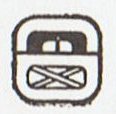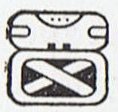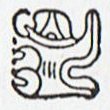The key for understanding seems to be Arcturus as the prime exponent of the Bootes constellation and although there are many Bootes stars earlier than April 17 and many later than April 27 we should concentrate on Arcturus.
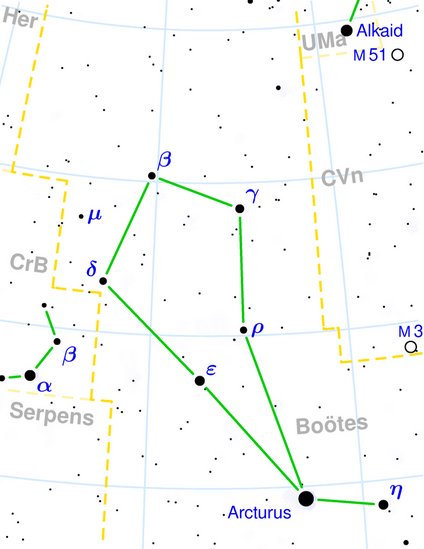
| April 21 (111) |
22 |
23 |
 |
 |
 |
| Cb1-5 |
Cb1-6 |
Cb1-7 (399) |
| no star listed |
η Arietis (31.9) |
θ Arietis (33.3) |
Mira (33.7) |
| October 22 (295) |
23 |
24 |
| Al Ghafr / Svāti / Neck / Ch3 / T6 |
Syrma, λ Bootis (215.6), η Apodis (215.8), ι Lupi, 18 Bootis (216.3), Khambalia (216.4), υ Virginis (216.5) |
ψ Centauri (216.6), ε Apodis (216.8) |
| Asellus Tertius, κ Virginis, 14 Bootis (214.8), 15 Bootis (215.2, ARCTURUS (215.4), Asellus Secundus (215.5) |
| April 24 |
25 |
26 (116) |
27 |
 |
 |
 |
 |
| Cb1-8 |
Cb1-9 |
Cb1-10 |
Cb1-11 (403) |
| ξ Arietis (35.0) |
no stars listed |
ν Arietis (38.5) |
| October 25 |
26 |
27 (300) |
28 |
| Asellus Primus (217.8), τ Lupi (218.1) |
φ Virginis (218.7), σ Lupi (219.1), ρ Bootis (219.5) |
Haris (219.7). σ Bootis (220.2), η Centauri (220.4) |
ρ Lupi (221.0), Toliman (221.2) |
| rutua - te pahu - rutua te maeva - atua rerorero - atua hiko ura - hiko o tea - ka higa te ao ko te henua ra ma te hoi atua |
I have not been able to here put in parallel Metoro's words with the specific glyphs, but he is beginning with the sound of drums (rutua te pahu) and then there appears to be an answer from above (rutua te maeva):
| Rutu 1. To read, to recite, to pronounce words solemnly; he-rutu i te kohau motu, to read the rongorongo tablets; hare rutu rogorogo mo hakama'a ki te ga poki ite kai, i te rogorogo, rongorongo school, house in which children were taught reading and writing the rongorongo signs. 2. To pelt with stones. 3. To gather in great numbers (of people). Vanaga.
Sound. Rutu-rongorongo = the sound of recitation. Barthel.
T. Beat. Henry.
To recite; tae rutu, irreverence. Churchill.
Pau.: rutu, a drum. Mgv.: rutu, to beat, to cause to resound. Ta.: rutu, a drum, to drum. Mq.: utu, to drum. Sa.: lutu, to shake a rattle. Churchill. |
| Pahu Drum. Pahu-rutu-roa = Long-beating-drum. Barthel.
M. Pahū. Tree gong. Starzecka.
Pahu uma, coffin; in modern usage, any sort of jar. Pahupahu = To dig a hole. Vanaga.
A trough, barrel, cask, cradle, drum, chest, box; pahu nui, a kettle; pahu oka, a drawer; pahu papaku, coffin; pahu rikiriki, sheath; pahu viriviri, hogshead. Pahupahu, box. Churchill.
A trough, barrel, cask, cradle, drum, chest, box; pahu nui, a kettle; pahu oka, a drawer; pahu papaku, coffin; pahu rikiriki, sheath; pahu viriviri, hogshead; pahupahu, box. P Mgv., Ta.: pahu, a drum. Mq.: pahu, a drum, a large cylindrical container. (To.: bahu, a hollow tree set in water as a filter.) Sa.: pusa, a box. To.: buha, id. Fu.: pusa, id. Niue: puha, id. Pau.: puha, id. Pahuahi, lantern, beacon. Paukumi, closet, cupboard. Pahupopo, a mould; pahupopokai, cupboard for food. Pahure: 1. To sweep everything away. 2. To wound, to lacerate, scar, bruise, lesion, sore; pahurehure, to wound, to scratch; hakapahure, to wound. T Pau.: pahure, to be skinned; pahore, to peel off, to scale. Mgv.: pahore, to cut off, to chop, to slice. Ta.: pahore, to flay, to skin. Churchill 2 |
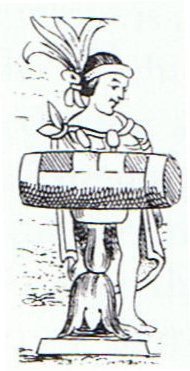
...
The
tun
glyph
was
identified
as a
wooden
drum
by
Brinton
...
and
Marshal
H.
Saville
immediately
accepted
it
...
[the
figure
above]
shows
the
Aztec
drum
representation
relied
on
by
Brinton
to
demonstrate
his
point.
It
was
not
then
known
that
an
ancestral
Mayan
word
for
drum
was
*tun:
Yucatec
tunkul
'divine
drum'
(?);
Quiche
tun
'hollow
log
drum';
Chorti
tun
'hollow
log
drum'
...
The
word
tun
was
used
when
counting,
for
instance
in
katun
= 20
days,
and
it
had
a
glyph
of
its
own:
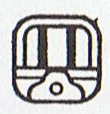 |
| tun |
The
[tun]
glyph
is
nearly
the
same
as
that
for
the
month
Pax
...
except
that
the
top
part
of
the
latter
is
split
or
divided
by
two
curving
lines.
Brinton,
without
referring
to
the
Pax
glyph,
identified
the
tun
glyph
as
the
drum
called
in
Yucatec
pax
che
(pax
'musical
instrument';
che
<
*te
'wooden).
Yucatec
pax
means
'broken,
disappeared',
and
Quiche
paxih
means,
among
other
things,
'split,
divide,
break,
separate'.
It
would
seem
that
the
dividing
lines
on
the
Pax
glyph
may
have
been
used
as a
semantic/phonetic
determinative
indicating
that
the
drum
should
be
read
pax,
not
tun
...
Thus,
one
may
expect
that
this
glyph
was
used
elsewhere
meaning
'to
break'
and
possibly
for
'medicine'
(Yuc.
pax,
Tzel.,
Tzo.
pox).
(Kelley)
 |
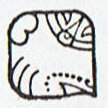 |
 |
 |
| 5 Tzek |
6 Xul |
7 Yaxkin |
8 Mol |
 |
 |
 |
 |
| 9 Ch'en |
10 Yax |
11 Sac |
12 Ceh |
 |
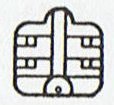 |
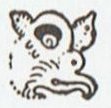 |
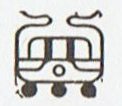 |
| 13 Mac |
14 Kankin |
15 Moan |
16 Pax |
 |
 |
 |
| 17 Kayab |
18 Cumhu |
19 Vayeb |
The
idea
of
'break'
agrees
with
the
picture
in
Cb1-6
(where
1-6
presumably
is
to
be
read
as
16,
the
number
of
the
Pax
month)
...
When he was reading at the beginning of side b of the Tahua tablet Metoro used similar words:
 |
 |
 |
 |
| Ab1-1 |
Ab1-2 |
Ab1-3 |
Ab1-4 |
| Te hoea - rutua te pahu - rutua te maeva - atua rerorero - atua ata tuu |
When
the
drums
were
sounding
it
possibly
meant
the
Sky
roof
was
moving
on
(maeva)
e.g. from
a
season
of
bad
weather
to
a
season
of
navigation
(cfr
Ab1-2
which
possibly
depicts
a
canoe
at
bottom).
| Maeva T. 1. Move. Rangi-maeva = Moving Sky (name of a marae). 2. Greet, greeting. Henry. |
Arcturus had the name Ana-tahua-taata-metua-te-tupu-mavae in the Tahitian star pillar list. I do not know what mavae means, but possibly it should be read as ma-va'e. And va'e seems to imply a point of division, which would agree with the equation 188 + 177 = 365 (the distance from Arcturus to Capella plus the distance from Capella to Arcturus equals a solar year):
| Vae Va'e: Foot, leg; te va'e mata'u, te va'e maúi, right foot, left foot. Va'e ruga, va'e raro, quick and light, without detour (lit.: foot up, foot down). Ka-oho koe ki a nua era va'e ruga va'e raro, ina ekó hipa-hipa, hurry straight to your mother, do not make any detours. Va'e pau, misshapen foot, clubfoot. Vae, to choose. Vaega, middle, centre; i vaega o, in the middle of. Vanaga.
1. Foot, paw, leg, limb; vae no roto, drawers; karikari vae, ankle. P Pau.: vaevae, foot, leg. Mgv.: vaevae, id. Mq.: vae, id. Ta.: vaevae, avae, id. 2. Pupil. 3. To choose, elect, prefer, promote, vote; vavae, to destine, to choose; vaea (vae 2), pupil. Vaeahatu (vae 1 - ahatu): moe vaeahatu, to sleep sprawling with legs extended. Vaega, center, middle, within, half; o vaega, younger; ki vaega, among, between, intermediate. P Pau.: vaega, the middle. Mgv.: vaega, center, middle. Mq.: vaena, vavena, vaveha, id. Ta.: vaehaa, half. Vaehakaroa (vae 1 - roa): moe vaehakaroa, to sleep with legs stretched out. Vaehau (vae 1 - hau 3), pantaloons, trousers. Vaeherehere (vae 1 - here 1), to attach by the paw. Vaerere (vae 1 - rere 1), to run. Churchill.
Ta.: 1. Timbers of a boat. Ha.: wae, knees, side timbers of a boat. 2. To share out. Sa.: vae, to divide, to share. Ma.: wawae, to divide. Churchill. |
Possibly, therefore, there could have been a technical term maeva for the distance from Capella to Arcturus, when 'time was running'. On the other hand, the sound of drums (rutua te pahu) could refer to the point in time (the heliacal rising of Arcturus) when summer (when time was running) suddenly stopped, when Sky was no longer moving (rutua te maeva).
|











